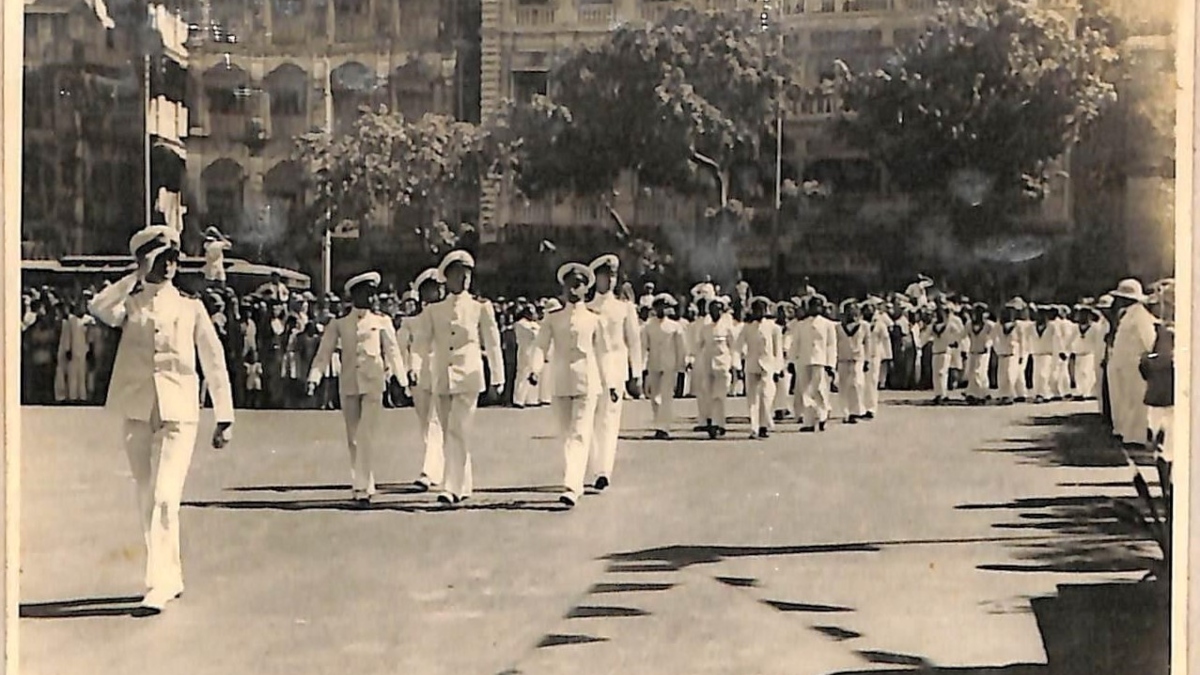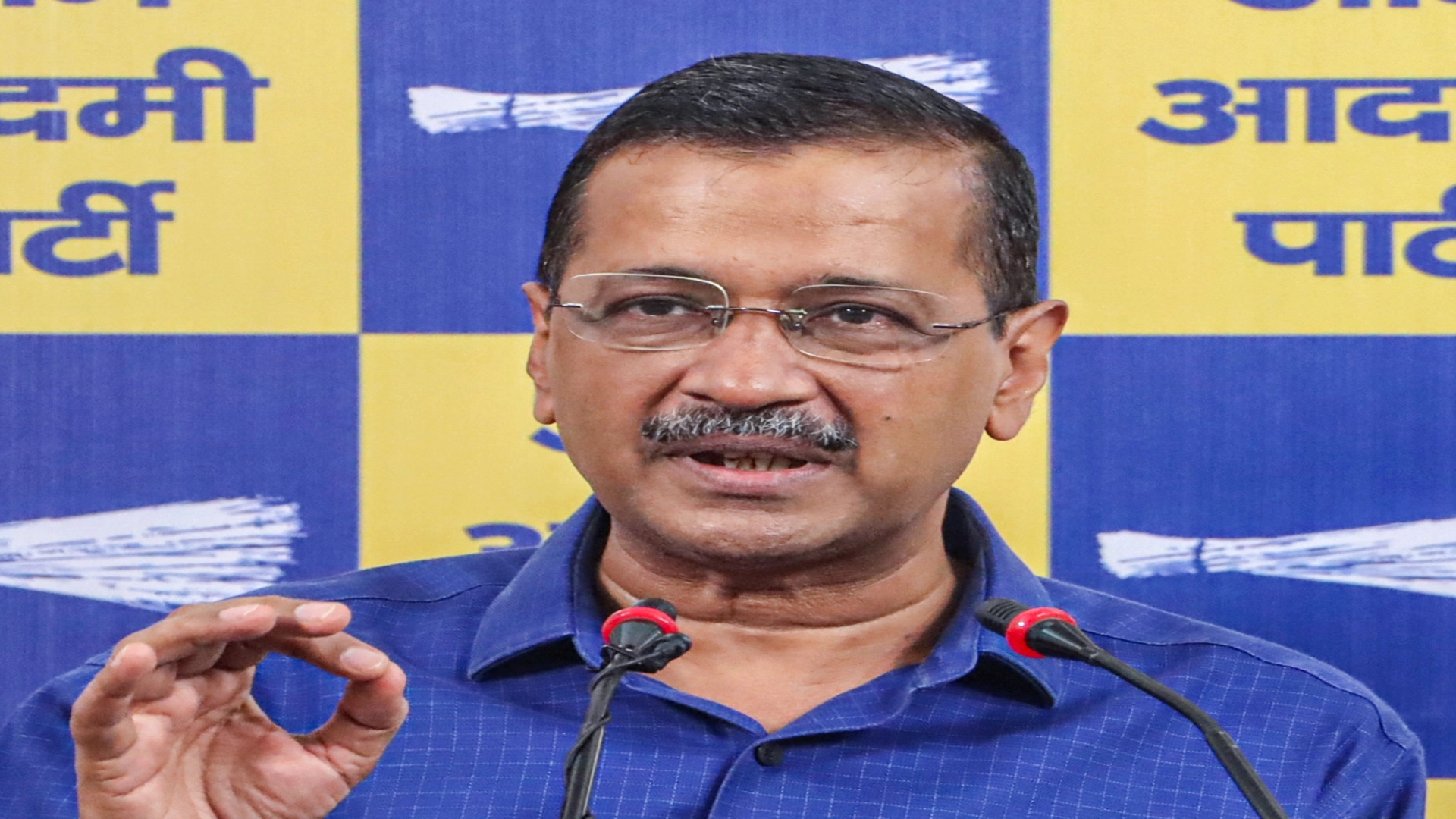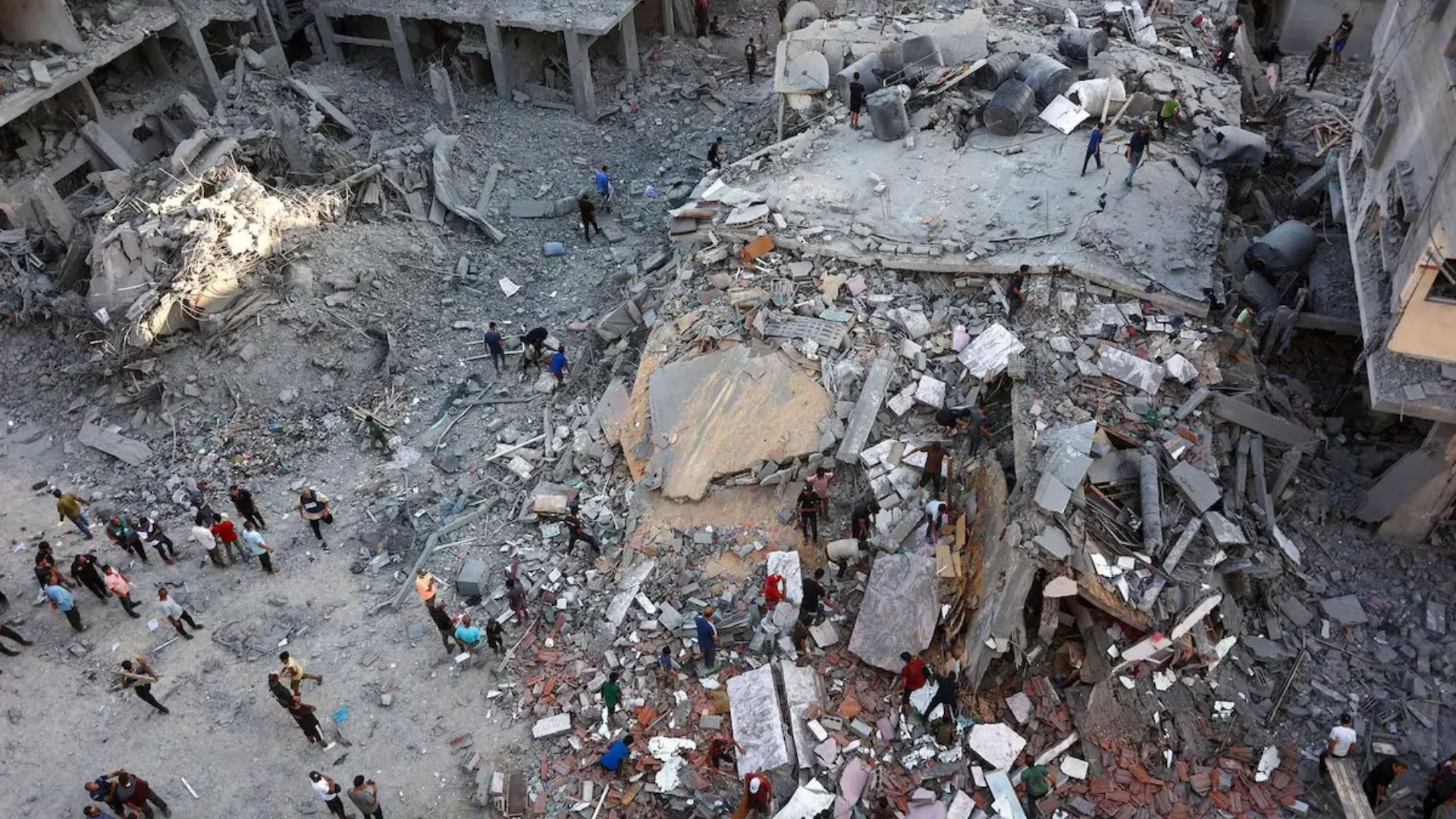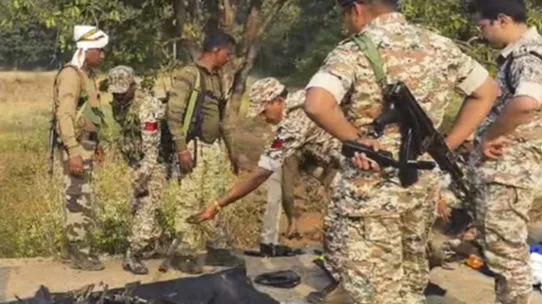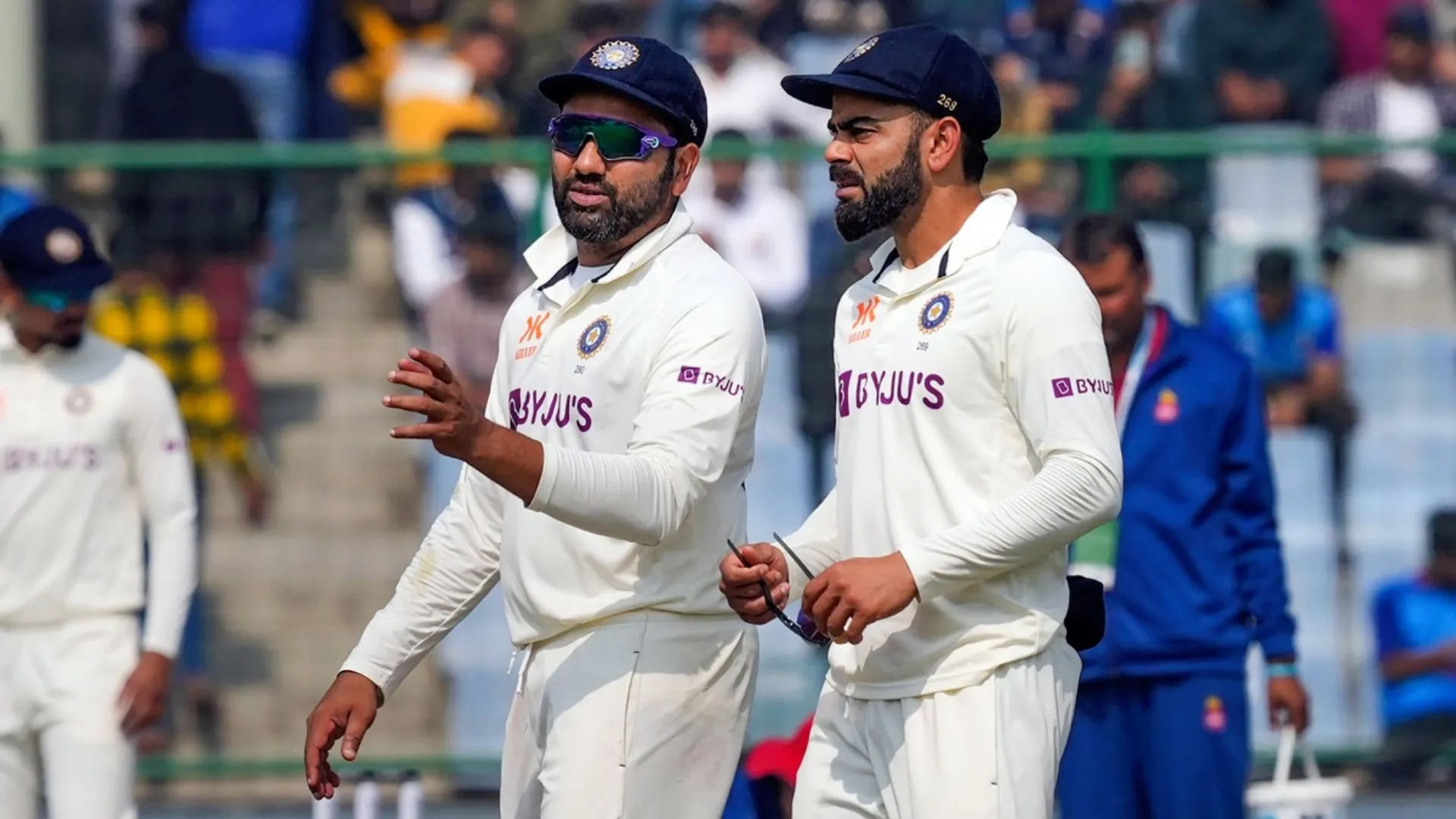November 8, 2020 saw a number of images by veterans from Commonwealth countries sporting red poppies as a symbolic recall of the close of the Great War on November 11, 1918. Commemorated as Remembrance Day on the second Sunday of November it is often a silent reminder of the lesser known contribution of nearly 4 million Indians in the two World Wars including almost 161,187 dying in action. The red colour of the poppy flower symbolises the blood spilt in the war. India had a significant part in the naval battles of the First World War. Known as the Royal Indian Marines then, India went into action with a fleet of minesweepers, patrol vessels and troop carriers. The Royal Indian Navy, as it was called after 1934, played a very important part during the Second World War; which brings us to our HMIS Bengal and other of her sister ships and their exploits during the war.
HMIS Bengal, a 650-ton Minesweeper of the Bathurst class Warship in its maiden passage, manned by a significant Indian Crew, partook in a David vs Goliath battle in the middle of the Indian Ocean on 11th November 1942. Today we celebrate 78 years of this astounding feat of bravery projected by the Indian and Merchant Navy. Cmde Srikant Kesnur’s article published in The Daily Guardian on 02 October 2020, which explores Indian Navy’s Pre-Independence journey drew attention to the exploits of Royal Indian Navy in the World War II. Known as Royal Indian Marine prior to 1934, The Royal Indian Navy was relatively small until the midst of the World War II when it was substantially expanded, with the enactment of Indian Navy (Discipline) Act, with the ships prefix being HMIS (His Majesty’s Indian Ship). It is the during the World War II that the Woman’s Royal Indian Navy was established, which involved women in Indian Navy for the very first time.
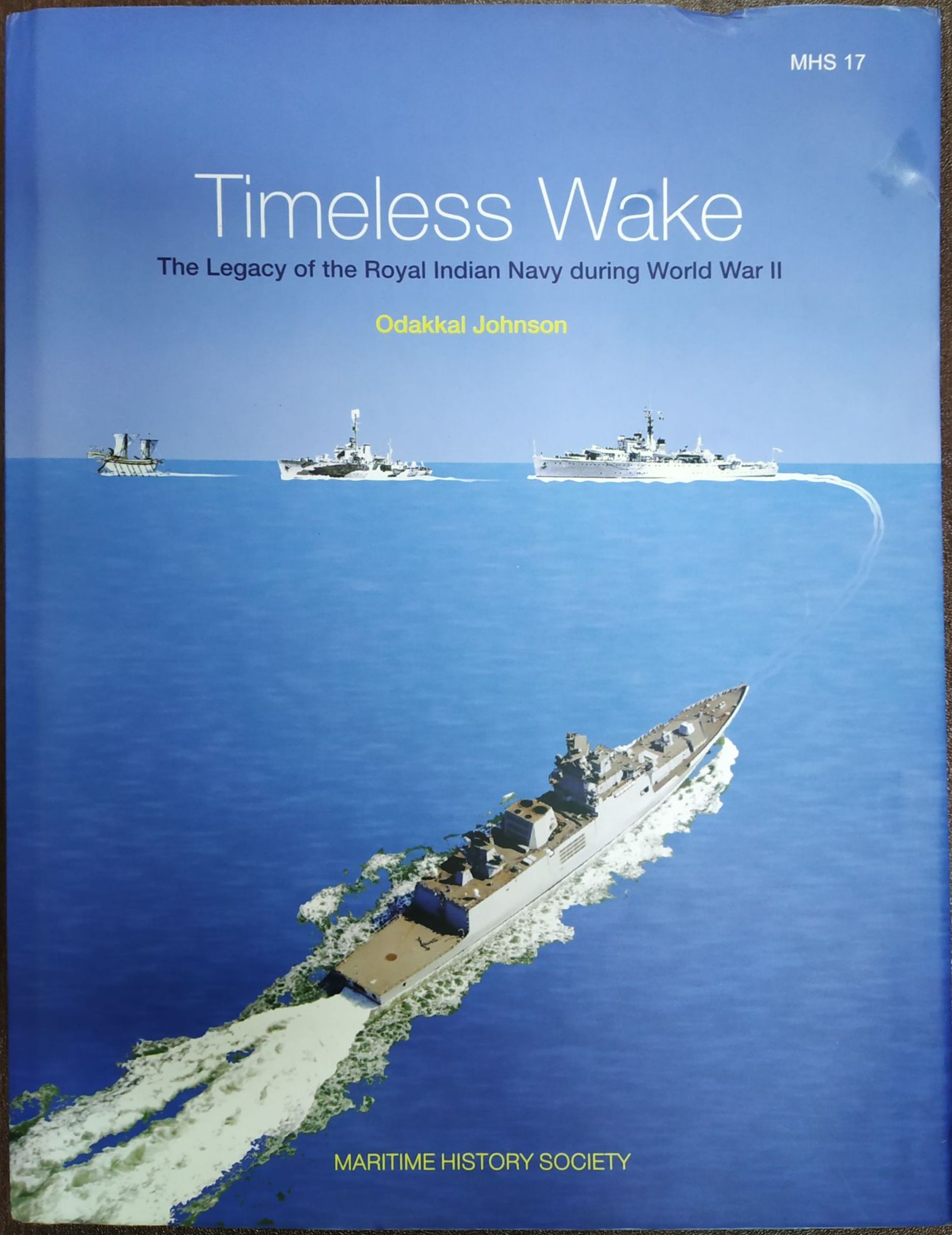
During World War II, the cruisers that operated against the Merchant ships were known as ‘Surface Raiders’. These raiders wreaked havoc on the British and allied Merchant ships. HMIS Bengal was commissioned in Royal Indian Navy on 8 August 1942. One of the most daring feats that this warship faced was the battle against two Japanese raiders twice her size, under the Captainship of Lt Cdr WJ Wilson. Till today this event stands as an example of gallantry of the naval personnel. We at MHS, going through our exhaustive archives, discovered the entire saga of Royal Indian Navy including an account of the Tiger Tale of Bengal Bravery commemorated in Maritime History Society’s 17th publication, ‘Timeless Wake: The legacy of the Royal Indian Navy during World War II’ written by Director MHS Cmde Odakkal Johnson. We are happy to share an account of events from the same book which are as follows.
“On a warm Wednesday morning, 11 November 1942, HMIS Bengal a British Indian corvette, was escorting the oil tanker MV Ondina on passage from Freemantle to Diego Garcia. When they had reached half the way an unknown vessel was seen steaming straight for them. Since it was too far away its identity could not be established. Bengal started to sound the alarm gongs and the ship’s company went to ‘Action Stations’. The strange ship was directly approaching Bengal. She altered course to starboard and the tanker was told to follow. This brought the strange ship on their port beam.
Suddenly they saw one more ship over the horizon heading over to her port bow. Both the ships were quite larger in size than Bengal. Her armament comprised of only one 12-pounder gun and a few close-range anti-aircraft guns. When it came closer it was clear that both the shops were of Japanese origin- Raider No.1 of about 10,000 tons and Raider No.2 of about 8000 tons. (How much was our ship?)
The tanker was told to act independently and to tryst at a certain position the following day. Bengal then increased to full speed and was getting ready to engage the first raider. She thought that the tanker would get enough time to get away from the scene but the Master of Ondina would not leave her to face the two raiders alone. With her four-inch gun, mounted aft, she returned the fire. When she reached in the range of about 3500 yards, Raider No.1 opened fire. The first shell landed about 400 yards ahead. Shells were showered on her but she with her 12-pounder gun crew fired salvo after salvo and about sixth found its mark. It hit Raider No.1 aft and exploded in her after-magazine or may be in ‘Ready Use’ stowage on deck, for a terrific explosion was observed, flames leaping up in the air. The crew of Bengal cheered at this scene but the gun’s crew kept to its job and kept on firing on the raider.
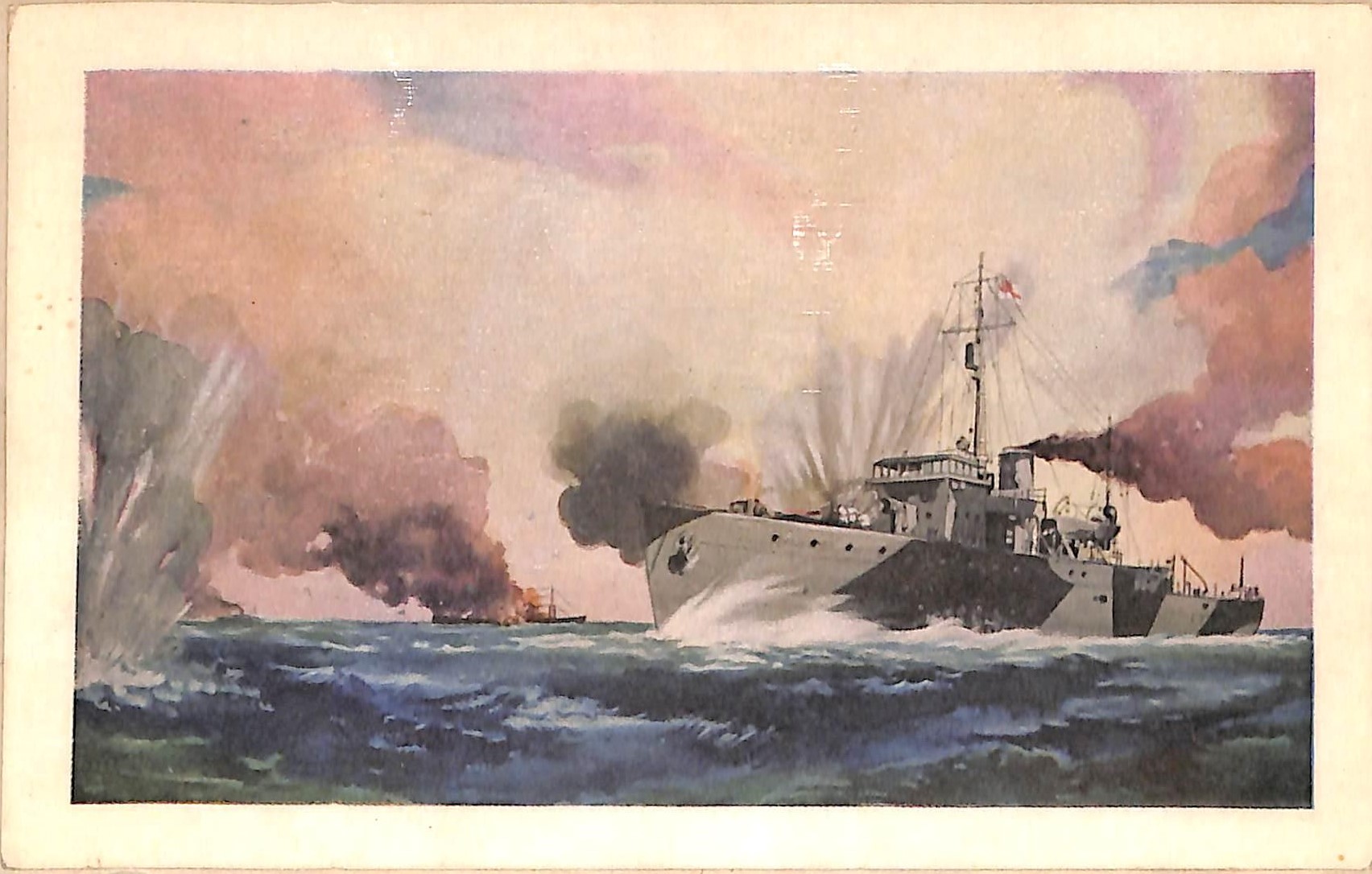
At this view, Raider No. 2 came closer and started firing on Bengal. Shells were bursting everywhere. A piece of shrapnel from a near miss holed Bengal in the forward provision room just above the water line. She was expecting a direct hit at any moment. The enemy was able to bring to bear four 5.9 inch or 6-inch guns per ship to this one 12-pounder. Raider No.1 was still burning. An estimate of over 200 rounds was fired on Bengal by Raider No.1. Bengal now had very few rounds of ammunition and she was injured very badly. So, she broke off the attack and steamed away at full speed. All this time the tanker had been steaming away as fast as she was able and it was not until after Bengal stopped attacking that the enemy opened fire on her. Raider No.1, which had considerably slowed down, concentrated her port guns on the tanker and her starboard ones at Bengal. Meanwhile Raider No.2 was also chasing them and firing continuously. The tanker was seen to be hit just abaft the bridge and clouds of smoke went up another terrific explosion was seen aboard Raider No.1. The fire had presumably crept forward to the main magazine for this explosion was much greater than one previous. The flames leapt hundreds of feet into the air and when the smoke cleared away nothing could be seen.
Raider No. 2 was chasing Bengal and firing continuously. She got a direct hit on the stern, luckily just above the waterline. A fire started but was promptly brought under control. She steamed in full speed under cover of a smoke screen. Raider No.2 continued to chase her and fired at her for about 15 minutes. Then she ceased and after another 15-20 minutes, when the smoke was cleared, the enemy was not in sight. Raider No.2 would have gone back to pick up any survivors from the sunken raider.
The tanker was last seen disappearing over the horizon and made her escape. Even though Bengal received a direct hit and innumerable near misses, it is incredible that no one was even slightly injured.
Those who took part in this action will never cease to marvel at the result. To think that a small ship, with only one 12-pounder gun, should engage two raiders, both more than 10 times her own size and each with about twenty times her gun powder, and so enable the tanker to escape, sink one raider and then get away herself is almost miraculous.
HMIS Bengal was clearly proven to be a “Bengal Tiger”. Despite a little twist in the ‘tail’ and some scars, she was set to recoup and roar all over again!” The battle ended in an unexpected way! Just like the biblical tale of David and Goliath, this incident too proves that showing precision, confidence, and sheer courage in face of a seemingly unbeatable situation can pivot the unfavourable into a favourable situation. The battle caused much sensation during the Second World War. HMIS Bengal and her company were received with great honour at Bombay. The ship’s company, her 75 officers and men received a public reception and were honoured during a lunch at the Sir Cowasji Jehangir Hall.
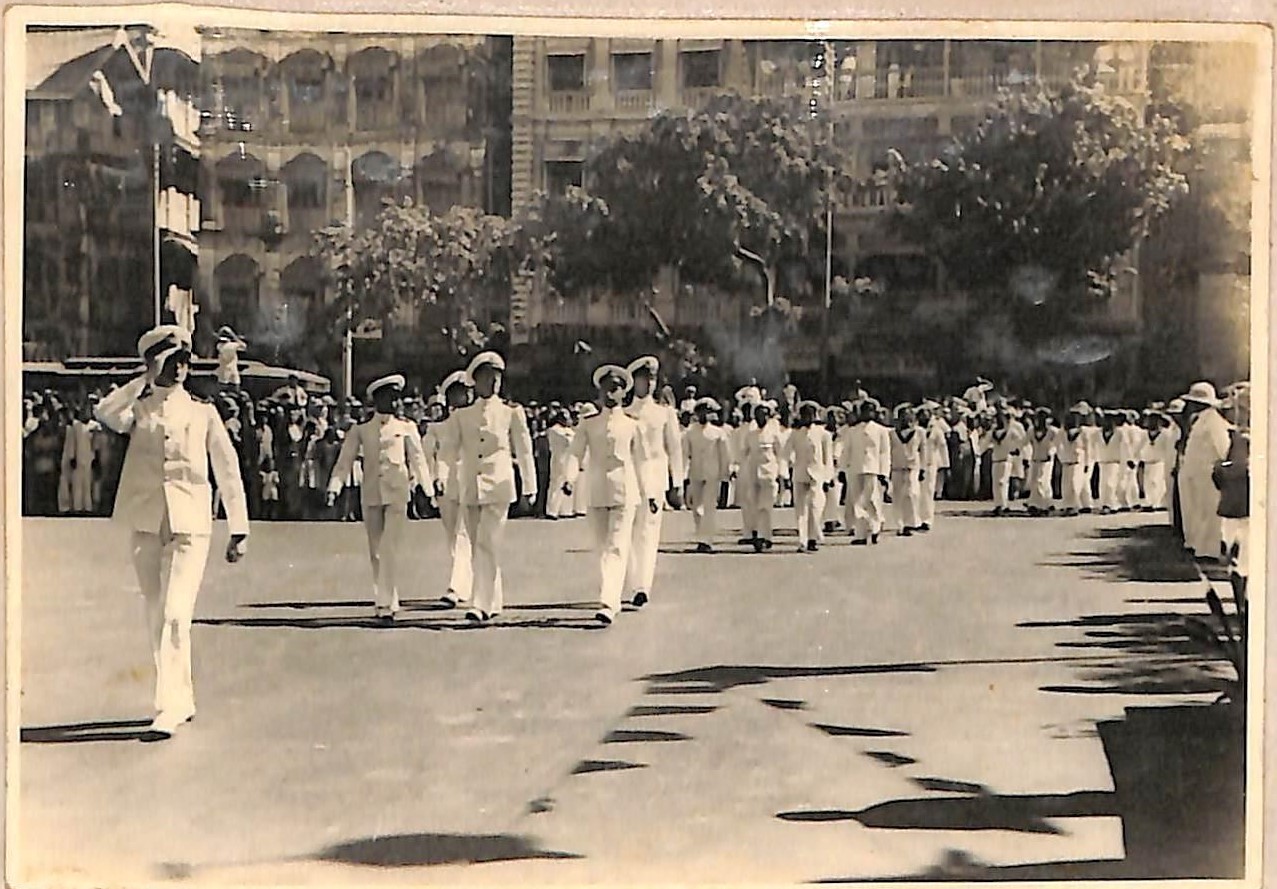
Ship’s company of Bengal at a ceremonial March Past: 8th December 1942
The Captain of the ship, Lt Cdr WJ Wilson, was decorated with the Distinguished Service Order (DSO), a military decoration of the United Kingdom awarded typically for meritorious services rendered during actual combat situations. Along with the commendable efforts of the ship’s Captain, his second in command Jai Mehra was awarded an MBE, a British order of chivalry and two famous 12-pounder gun crew, Leading Seaman Ismail Mohammed was awarded the Indian Distinguished Service Medal (IDSM) and Petty Officer Mohammed Ibrahim was awarded the Indian Order of Merit (IOM).
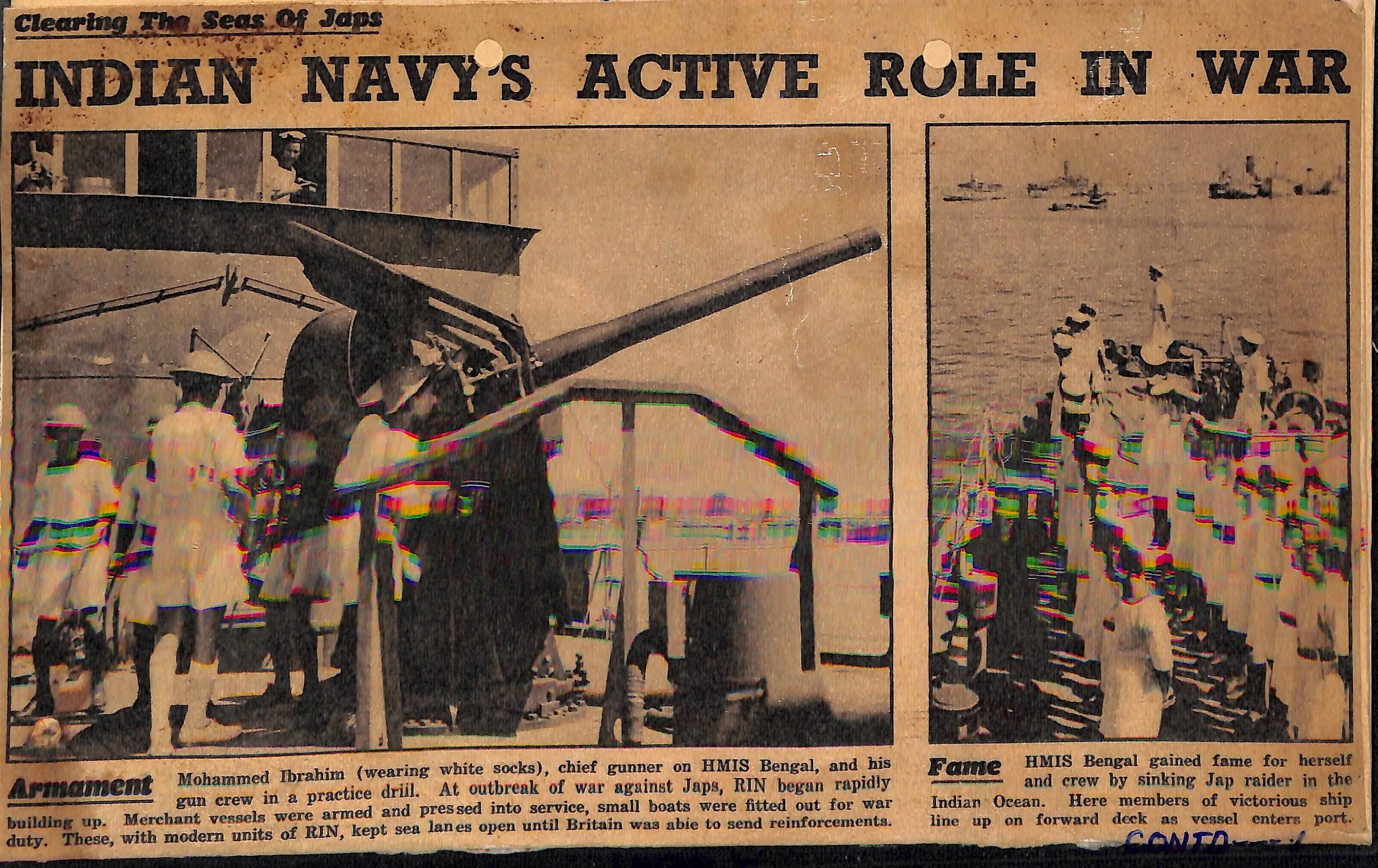
HMIS Bengal not only survived to tell the tale, she recovered well and went on to play a role in a few other battles as well. After the iconic battle, HMIS Bengal was repaired in Bombay and served as an escort vessel in Indian waters. She was a part of the 37th Minesweeping Squadron during Operation Dracula that was executed on 2nd May 1945 for capturing Burma. Immediately after the Second World War ended, HMIS Bengal, as part of the 37th Minesweeping Flotilla, went into action as a dan-layer ship for clearing the passage in the Malacca Strait.
Taken into service on 8th August 1942, by Lieutenant Commander W.J. Wilson, HMIS Bengal was decommissioned in 1960 and sold as scrap. The “Bengal Tiger” that roared on 11th of November 1942 clearly was a testimonial of courage and perseverance.
Just like having a Second World War connection, did you know that 11th November is a significant date in the First World War too? This date is also observed as ‘Remembrance Day’ in the United Kingdom in honour of all the soldiers and people who died in the wars. It was an event started to remember the soldiers fallen of the First World War that ended on 11th of November 1918. People wear poppies as a mark of remembrance.
Leafing through our archives at MHS we found many of such maritime tales of India. Sadly, most of them are not a part of popular narratives in our country’s history. India’s maritime space is as aspect that is not realized from the land. India’s strategic position in the Indian Ocean Region has ensured that we have a list of maritime stories and heroes that have left an impressive wake. We at MHS are striving for past four decades to open our fellow countrymen’s eyes towards the maritime world that India’s vast coastline has to offer.
Staying true to the mission of ‘awakening maritime consciousness’, Maritime History Society holds an Annual Maritime History Seminar each year on a selected Maritime Theme. This year’s 42nd edition is envisaged as a National Maritime Heritage Conclave (NMHC). MHS is organizing the NMHC 2020 in collaboration with Gujarat Maritime University, Gandhinagar, All India Marine Pilots Association and The Daily Guardian. The theme for the Conclave is “Unsung Frames in Indian Maritime History”. Celebrating the lesser known narratives and sections of India’s maritime world, we hope to promote sea mindedness, incite a curiosity, and create awareness about India’s maritime heritage. For more information about the event visit our website www.mhsindia.org. and for updates of the other events follow our social medias.
Maritime History Society has been doing the work of promoting sea mindedness for past 42 years since our founder, Late Vice Admiral MP Awati envisaged this as our mission. We invite other organizations and enthusiasts to partner with MHS and partake in our endeavours to dive deeper into the Maritime Heritage. The sea is a vast medium of opportunities and collaborations. Together we can achieve a resurgence of interest, scholarship and attention towards the Maritime Heritage of India.
Ashwini Nawathe is Archives & Collection Associate and Saba Purkar is Academic Assistant.

